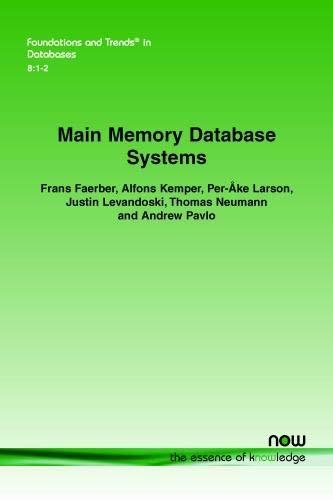Question
You need to review Jesses e-mail message regarding object modeling and the JAD session summary. Then she wants you to identify possible use cases and
You need to review Jesses e-mail message regarding object modeling and the JAD session summary. Then she wants you to identify possible use cases and actors, and create a use case diagram for the TIMS system.
- Using Microsoft Visio (download free trial version) or drawing program (example: Draw. io)
Jesse's e-mail message:
-
Now we're ready to build an object model for the TIMS system. Based on the JAD summary, we can use the same entities that we already identified, so the list should include instructors, students, corporate clients, course listings, and the training administrator. Also, remember that TIMS will interface with the SCR accounting system, so be sure to include it as an entity.
After you review the JAD summary, think some more about how the entities relate to each other, and to the overall system. If an external entity, such as a student, interacts with the system, then you should identify that entity as an actor and sketch out a use case that shows the interaction. Identify at least three of these, and send them to me. For each use case, remember to create a use case description, which looks like a table with sections for use case name, actor, description, successful completion, alternatives, preconditions, postconditions, and assumptions.
If you can, also draw a use case diagram that shows the actors and their actions. Remember to put a system boundary around the diagram so youll know what is internal and what is external to the system.
I know this sounds like a lot to do, but it is the foundation for the object model so it really is important.
Let me know if you have any questions.
Jesse Baker
-
I also want to see a class diagram. Thats the diagram that takes a single use case, shows the classes that participate in the use case, and documents the relationships among the classes. Before you start, youll need to review your notes on cardinality. When you create the diagram, be sure to use the proper UML notation symbols. For example, 0..* means zero or many, 0..1 means zero or one, 1 means one and only one, and 1..* means one or many.
Good luck!
Jesse Baker
-
We also need a sequence diagram for the TIMS object model. A sequence diagram is a real-time model that shows interaction among classes during a particular time period. In your diagram, include the classes (with the class name in a rectangle), lifelines (a dashed vertical line that drops down from the class), messages (a horizontal lines that shows the actions), and focuses (narrow vertical shapes that cover the lifelines and indicate when a message is sent or received).
Let me know if you have any questions.
Jesse Baker
-
I almost forgot the last diagram we also need a state transition diagram. These are not hard to do. Remember, they show how an object changes from one state to another, depending events that affect that object. For example, when a student registers, he or she becomes active. After the course is completed, the status might change to former. Use simple terms that make sense, and you should not have a problem.
Good luck!
Jesse Baker
Step by Step Solution
There are 3 Steps involved in it
Step: 1

Get Instant Access to Expert-Tailored Solutions
See step-by-step solutions with expert insights and AI powered tools for academic success
Step: 2

Step: 3

Ace Your Homework with AI
Get the answers you need in no time with our AI-driven, step-by-step assistance
Get Started


